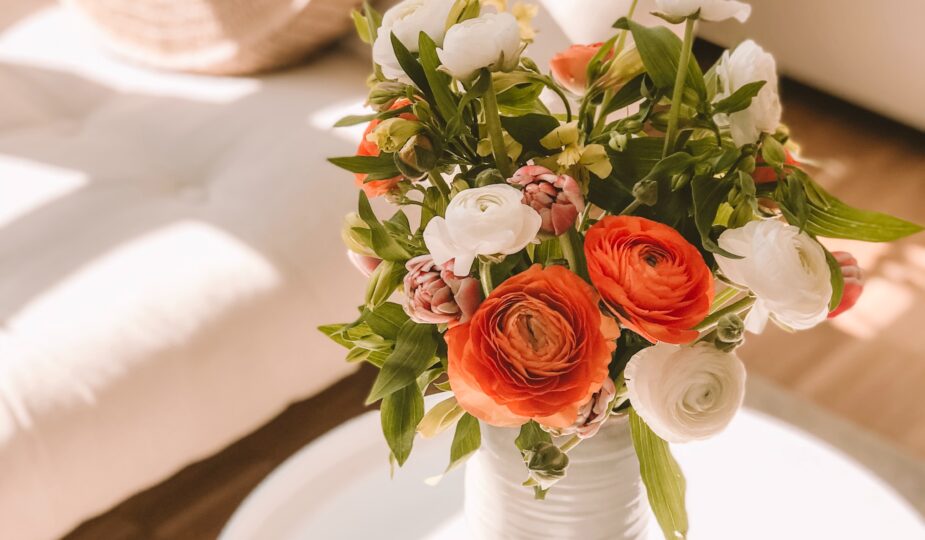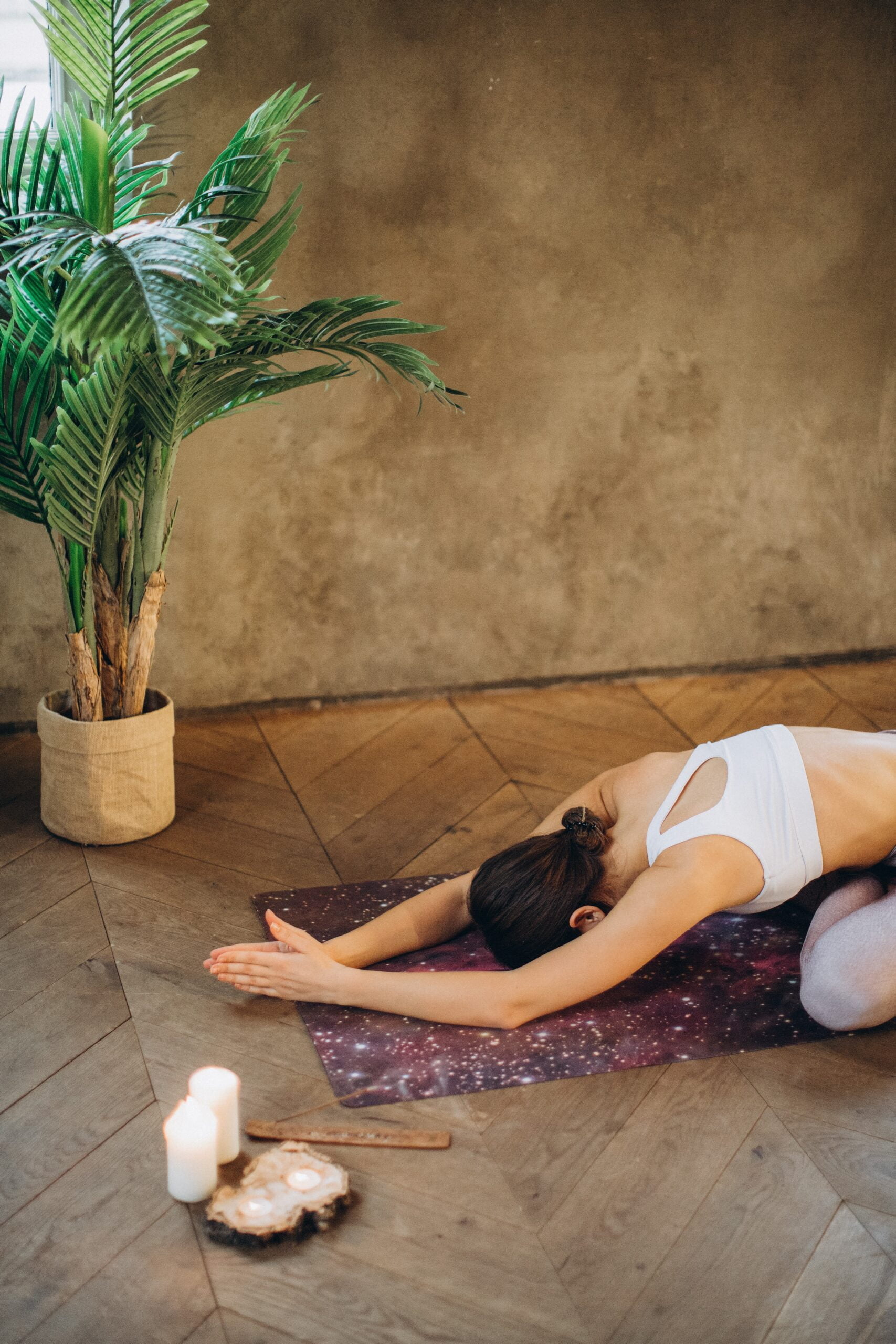Working with flowers is a joyous and transformative experience. Each delicate petal and vibrant bloom holds the power to brighten spaces, lift spirits, and convey emotions with grace. From elegant bouquets to captivating centerpieces, the art of flower arranging allows us to connect with nature’s exquisite offerings and infuse our surroundings with natural beauty.
In this guide, we will explore the fundamentals of flower arranging, unravel the secrets behind breathtaking designs, and provide you with practical tips and techniques to create your own floral masterpieces.
Understanding the Basics of Flower Arranging
Before we dive into the intricate details of flower arranging, it’s important to understand the basic elements that form the foundation of every beautiful arrangement.
To begin, gather essential tools such as floral shears, a clean vase or container, floral tape, and oasis foam if needed. These tools will assist you in creating a sturdy and well-structured arrangement. Additionally, familiarize yourself with different types of flowers and foliage, appreciating their unique colors, shapes, and textures. By understanding the characteristics of each bloom, you’ll be able to create harmonious compositions that captivate the eye.
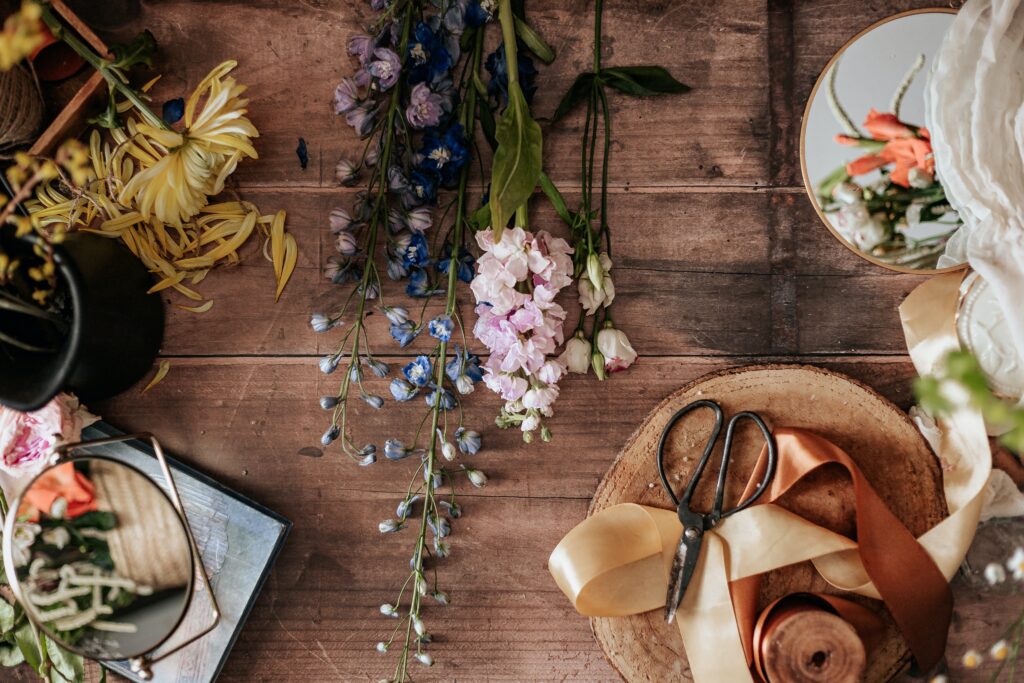
Design Principles for Beautiful Flower Arrangements
Creating visually appealing flower arrangements goes beyond simply placing flowers in a vase. It involves understanding key design principles that bring harmony, balance, and impact to your compositions.
One essential principle is balance, which refers to the distribution of visual weight within an arrangement. Achieve balance by distributing flowers and foliage evenly, considering both their size and color. Proportion is another crucial aspect, ensuring that the size of the arrangement is suitable for the chosen vessel and the intended space.

Focal points play a vital role in drawing attention and adding interest to your arrangement. Select one or more standout flowers or unique elements to create focal points that anchor the composition. These focal points will guide the viewer’s eye and create a sense of visual depth.
Step-by-Step Flower Arranging Process
Now that you have a grasp of the basics and design principles, let’s walk through a step-by-step flower arranging process that will bring your vision to life.
Prepare the container: Choose a clean vase or container that complements your desired style. Ensure it is appropriately sized for the arrangement you have in mind.
Condition the flowers: Before starting, trim the stems of your flowers at a diagonal angle and remove any excess foliage that may fall below the waterline. This promotes better water absorption and helps to keep the arrangement fresh.
Create a solid foundation: Begin by adding foliage and greenery to the container, forming a base that will provide support and enhance the overall structure of your arrangement.
Place focal flowers: Select your focal flowers and place them strategically within the arrangement. These are typically larger blooms that will capture attention and set the tone for the composition.
Add complementary blooms: Introduce secondary flowers and accent blooms that complement the focal flowers. Consider the color palette, shape, and texture of the blooms to create a harmonious blend.
Balance with height and filler flowers: Create balance and add visual interest by incorporating flowers of varying heights and sizes. Taller blooms can provide verticality, while filler flowers add texture and fill gaps within the arrangement.
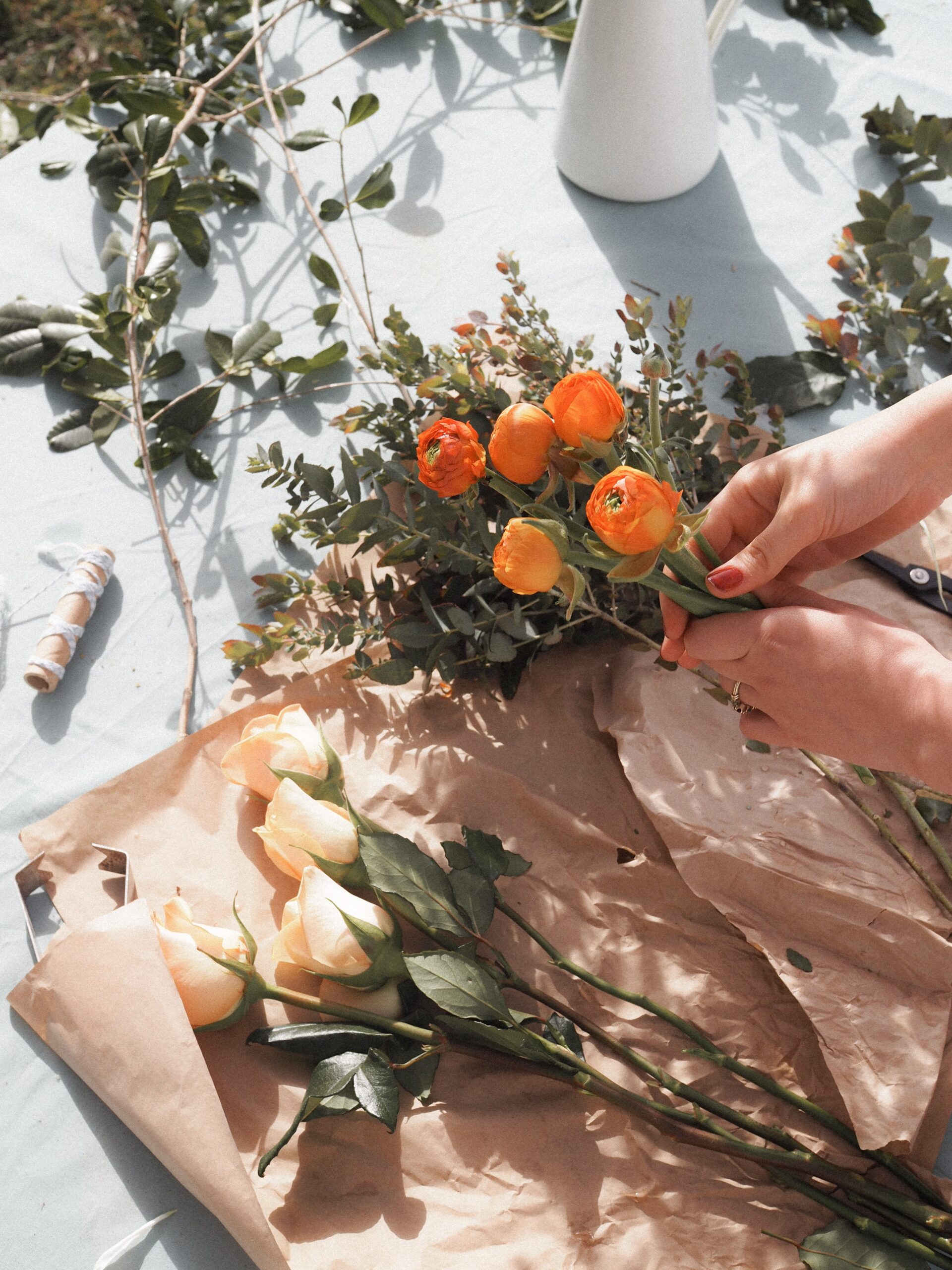
Finalize the design: Step back and assess your arrangement. Make any necessary adjustments to achieve the desired shape, balance, and overall aesthetic. Ensure that no stems are left exposed, and every element contributes to the overall cohesion of the design.
Tips and Tricks for Stunning Flower Arrangements
To elevate your flower arranging skills and infuse your creations with a touch of uniqueness, consider these tips and tricks:
Mix different flower types and sizes: Combine various flower types and sizes to create visual interest and dimension. Experiment with contrasting colors and shapes to create a captivating composition.
Incorporate unique elements: Enhance your arrangements by incorporating unexpected elements such as branches, berries, or dried flowers. These additions can add texture, height, and an element of surprise to your designs.
Enhance with creative accents: Explore creative accents like ribbons, decorative wire, or natural elements like stones or seashells. These small details can elevate the overall look and create a personalized touch.
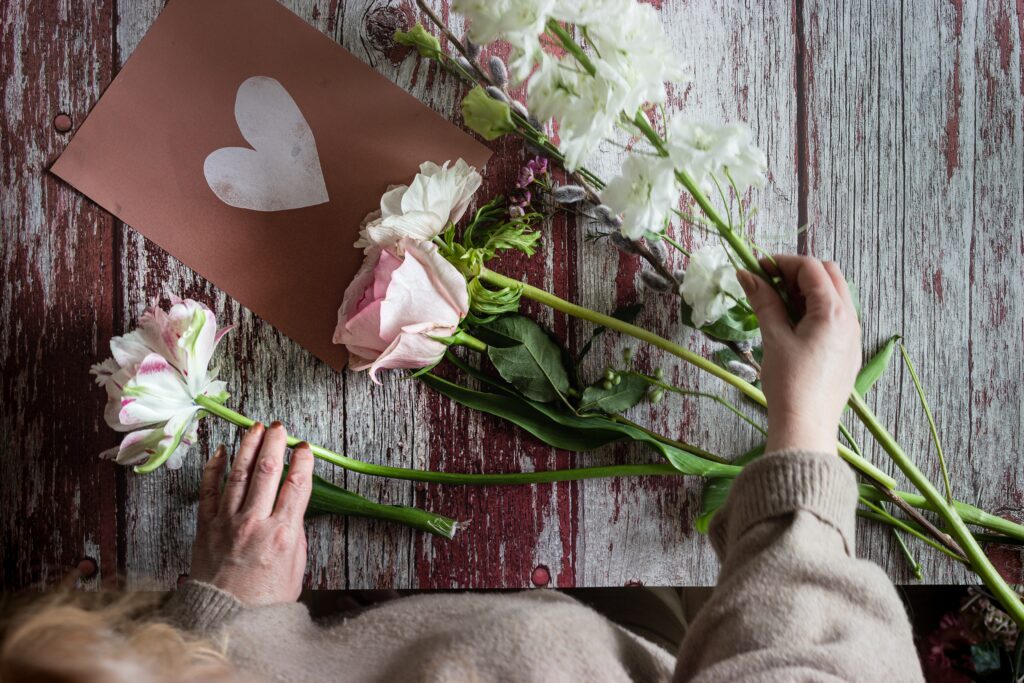
Experiment with color combinations: Don’t be afraid to experiment with unconventional color combinations. Mixing unexpected hues can result in breathtaking and eye-catching arrangements.
Caring for Your Flower Arrangements
Once your arrangement is complete, proper care is crucial to ensure its longevity and beauty. Here are some essential care tips:
Water and nourishment: Fill your vase with clean, room temperature water and add floral preservative if available. Change the water every two to three days and trim the stems at a diagonal angle to promote water absorption.
Refreshing the arrangement: As flowers start to fade, remove them from the arrangement to maintain its freshness. Adjust the position of remaining flowers as needed and add fresh water.
Repurposing older flowers: Don’t discard fully wilted blooms just yet. Repurpose them by drying them upside down or pressing them for use in crafts or as decorative accents in other projects.
Showcasing Your Floral Masterpieces
Now that you have mastered the art of flower arranging, it’s time to showcase your creations and share their beauty with others. Consider these tips:
Choosing the perfect location: Place your arrangement in a spot where it can be admired and appreciated. Consider the lighting, overall ambiance, and the room’s aesthetic to find the ideal spot.
Photographing your arrangements: Capture the beauty of your floral masterpieces by taking photographs. Experiment with different angles, lighting, and backgrounds to showcase their unique qualities.
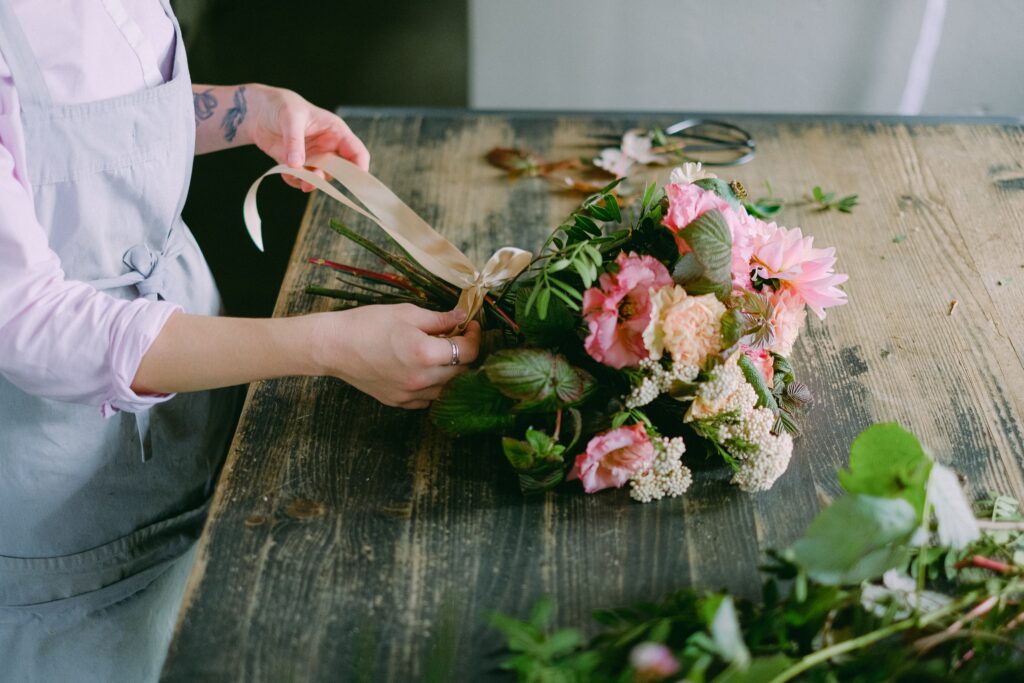
Final Thoughts
As you continue on your flower arranging journey, remember to let your imagination bloom. Experiment with various flowers, colors, and styles to develop your unique aesthetic. The art of flower arranging is a continuous learning process, and with each arrangement, you’ll refine your skills and discover new possibilities.

